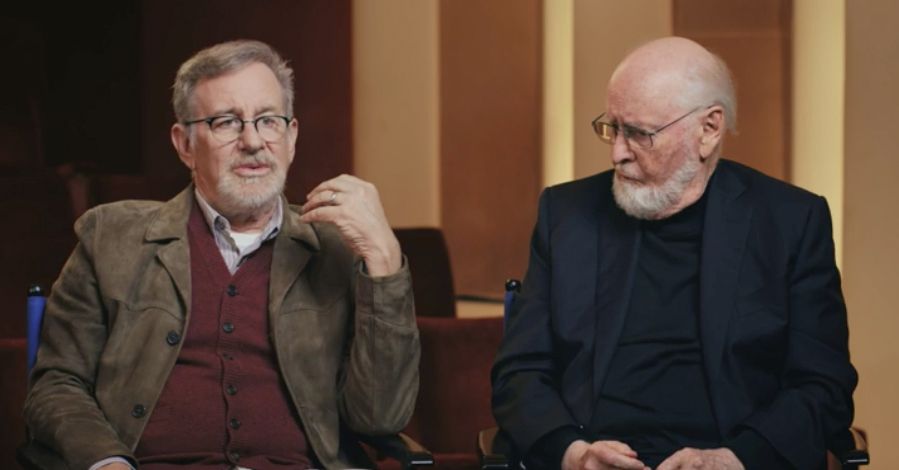
Who is John Williams?…
He’s a composer who has overwhelmed his audiences with joy and nostalgia, has left them tense and trembling in fear, and has even brought tears to their eyes. I knew that he would inevitably make his way into the blog somehow, for it would be a disservice not to discuss him or his influence. I am surprised that I was able to make it this far without mentioning one of the greatest film composers of all time!
Setting that aside, who really is John Williams? Born on February 8, 1932 in Queens, New York City, John Williams was raised in a musical family, as his father Johnny Williams was a jazz percussionist in the Raymond Scott Quintet. During his teenage years, Williams and his family moved to California, where he would gain much of his early schooling in music. After being drafted into the U.S. Air Force in 1952, Williams conducted the U.S. Air Force Band as part of his duty. Completing his service in 1955, Williams attended Juilliard to become a jazz musician. He then started his music career as a session musician for composer Henry Mancini and eventually began composing scores for television shows and films.

Since then, Williams has become one of the most influential and well-known composers of our time. In Academy Awards alone, he has been nominated for 50, more than any other living individual, and he has won five. Williams has composed dozens of famous film scores, many of which are found in the films of director Steven Spielberg, his friend and common collaborator. Some of the most recognizable include Jaws (1975), Star Wars (1977), E.T. the Extra-Terrestrial (1982), Schindler’s List (1993), Saving Private Ryan (1998), Harry Potter (2001), and Catch Me If You Can (2002). These scores among dozens of others have captivated and moved audiences for decades, and even at the age of 85, Williams continues to create beautiful, awe-inspiring music for all to experience and to admire.
Williams has a profound grasp of human emotion. Using rhythms and chord progressions like syntax and diction, Williams can poetically describe and capture scenes and emotions through his music. One could say that music is Williams’s second language. Through all of his scores, Williams evokes scene-appropriate emotions from the audience to fit the movie’s mood but also to create an everlasting emotional experience for each listener.

Williams is a master of emotion. He can inspire joy and love or he can dig up feelings of worry, fear, and loneliness. In one of my all-time favorite movies, E.T. the Extra-Terrestrial (1982), Williams wrote pieces coming from this whole range of emotions. My favorite piece from the film plays during the final bike chase scene on the way to E.T.’s spaceship (Video Link 1: E.T. Bike Chase Scene). Through Williams’s score, the scene moves from mysterious to curious to hopeful to mischievous to fleeting to dangerous to finally overcoming the danger and feeling like you can fly as the children soar away on their bikes. There are dozens of additional micro-changes with certain audio and visual cues, but these are the major shifts. I encourage you to watch the scene with this mood sequence in mind and consider how you feel it fits. Whenever I watch this scene, I become consumed by the chase and shed a tear during their final triumph in the clouds. I feel that the song perfectly captures how it feels when you are bursting with joy and think that you can walk on air. The violins especially capture that fleeting and ethereal emotion on the upper octave of the melody.
When considering the works of Williams, we also must listen to the works which seek to capture more angry and intense emotions. In Star Wars: The Force Awakens (2015), Williams composed the fierce and authoritative March of the Resistance (Song Link 1: Star Wars March of the Resistance) to show the strong comeback of the Resistance movement. Pounding full chords with strong offbeats give this song the unique qualities of a fiery march, and the battling and destruction on screen add to the Resistance’s growing authority and power as they take down their foes.
One last thing I would like to mention about John Williams is his versatility. He can do more than orchestral masterpieces; he can create art in multiple music genres. In Steven Spielberg’s Catch Me If You Can (2002), Williams returned to his jazz roots in the opening credits sequence (Song Link 2: Catch Me If You Can Intro). Dark, mysterious, dynamic, and fleeting, this song is reminiscent of main character Frank Abagnale Jr. and his scheming life as one of the most successful con artists of all time. The song goes through a number of moods that grow increasingly tense, representing Frank’s increasingly desperate escapes from the FBI’s grasp before he is finally caught. This amazing 1960s-style jazz piece shows how talented and emotionally aware Williams can be through his music.
John Williams is one of the best composers of all time and I hope that you have learned to appreciate him and his work just even a little bit more now. Thank you for reading this post and I hope to see you next time on Scoring the Score!
Image Credits:
Figure 1: Image 1
Figure 2: Image 2
Figure 3: Image 3
